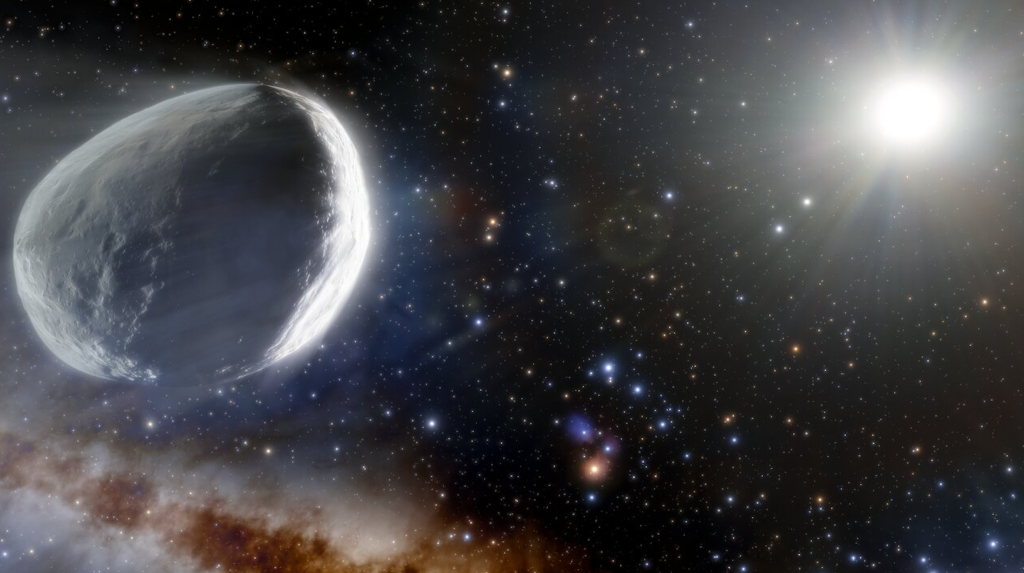A new study using data from NASA’s Hubble Space Telescope has confirmed the largest known comet to man. Tuesday, NASA unveiled a new study confirming the Bernardinelli-Bernstein Comet is, in fact, the largest comet scientists have ever found. At its largest point, the comet is approximately 80 miles wide. In comparison, that measurement makes the comet larger than the state of Rhode Island.
Videos by ComicBook.com
“This comet is literally the tip of the iceberg for many thousands of comets that are too faint to see in the more distant parts of the solar system,” David Jewitt, co-author of the new study in The Astrophysical Journal Letters said in a NASA press release. “We’ve always suspected this comet had to be big because it is so bright at such a large distance. Now we confirm it is.”
According to scientists, the comet is technically barreling towards Earth at a whopping rate of 22,000 miles per hour. While it’s on its way towards the third rock from the sun, researchers suggest it won’t get any closer than a billion miles away from the sun, meaning it won’t get any closer than Saturn’s position in the solar system.
“With its distant perihelion and uniquely large size, C/2014 UN271 (Bernardinelli-Bernstein) is the prominent archetype of distant comets, whose activity is driven by hypervolatiles,” a study from a previous group monitoring the comet said earlier this year. “Monitoring of dust and gas emission as the comet will approach and pass perihelion will permit to study its activity time pattern and compare it to the distant (outbound) activity of Hale-Bopp. Post-perihelion thermal measurements will permit to study possible albedo changes, such as a surface brightening compared to pre-perihelion, as was observed for Hale-Bopp.”
Scientists Pedro Bernardinelli and Gary Bernstein discovered the comet in 2021, giving the celestial body its name.
The size of the comet also dwarfs the previous record holder. Previously, the Hale-Bopp comet was discovered to be about half the size of latest title holder.









